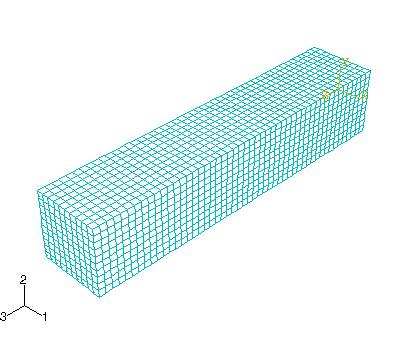Creating a mesh | ||
| ||
Figure 1. 50 × 10 × 10 mesh.


Seed the part with a target global element size of 0.02. Select C3D8R from the Explicit library as the element type, and mesh the part.
Note:
The proposed mesh density exceeds the model size limits of the Abaqus Student Edition. If you are using this product, specify one of the following:
A global element size of 0.04.
A 50 × 3 × 3 mesh.
A 25 × 5 × 5 mesh.